By: Maria T. Cannon
Due to the Azerbaijani regime’s military aggression last week, over 100,000 Armenians have fled the Republic of Artsakh (also called Nagorno Karabakh) in just four days. Azerbaijan’s military assault followed its nine-month-long illegal blockade of the entire region. For those Armenians who have called this land home (Artsakh became part of the Kingdom of Armenia in 189 BC and has maintained a majority Armenian population since then, despite being subjected to various invading rulers), fleeing their ancestral lands is necessary for survival. The alternative is to be subjected to the whims of a petro-dictatorship that openly conveys its formal policy of anti-Armenian hatred and belief that Armenians have “no right to live in the region.”
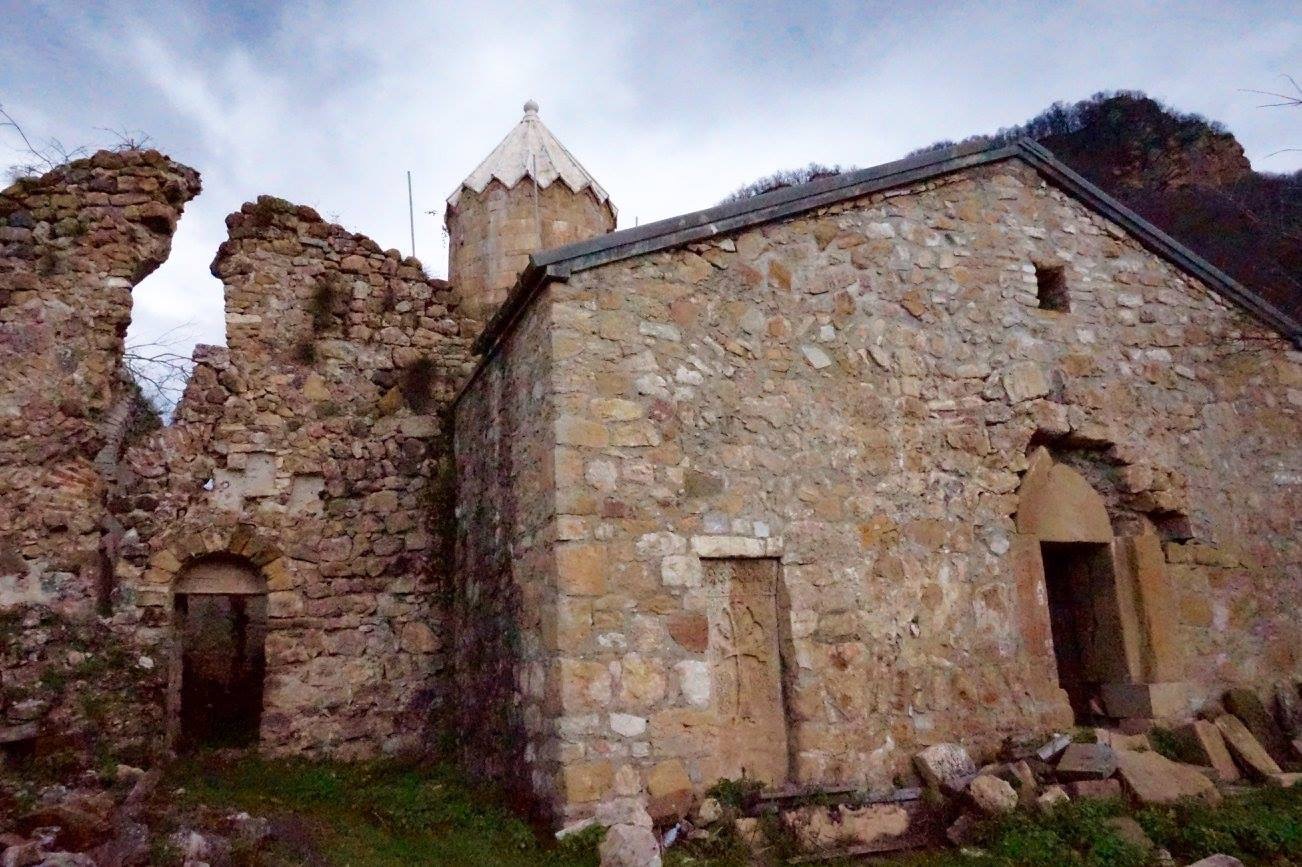
Gtichavank Monastery in Hadrut (2015). Used with permission from Yelena Ambartsumian.
Heartbreakingly, the exodus of Armenians and Azerbaijan’s occupation of the region leaves Armenian art and architecture unprotected, and we are already seeing videos of Azerbaijani soldiers shooting at and desecrating cultural heritage from Azerbaijani social media channels (international reporters are not able to access the region). Artsakh is known as the “Crown Jewel” of Armenian cultural heritage, as it contains some of the most exemplary representations of medieval Armenian architecture, as well as important sites such as the first school to teach the Armenian alphabet in the early fifth century.
War Crimes, Human Genocide & Cultural Genocide
It is a story well-known to regions in the throes of war: the searing pain of losing one’s home is compounded by the risk posed to cultural heritage left behind. In international law, war crimes, crimes against humanity, ethnic cleansing, and [human] genocide are defined separately from cultural genocide. However, all usually include acts of cultural genocide, due to the nature of the crimes committed.
Evidence of cultural genocide can be used to help prove the special intent required for the crime of genocide. This is largely because the two are so closely connected. In fact, modern experts urge legal professionals to understand that cultural genocide is “as old as [human] genocide itself” and may (in fact) be virtually inseparable from human genocide.
In light of the current situation in Armenia, and past actions by Azerbaijani forces in Artsakh— coupled with Azerbaijan’s complete eradication of over 100 medieval monasteries and thousands of cross-stones in its exclave of Nakhichevan during “peacetime”—it is an almost certainty that Azerbaijan will continue to destroy Armenian cultural heritage. Moreover, because global cultural heritage organizations such as UNESCO, have failed to uphold their own organizational standards, and other entities such as the EU have refused to condition their purchases of natural gas from Azerbaijan on Azerbaijan’s respect for cultural heritage, there is an even higher likelihood that Azerbaijan will continue to act with impunity.
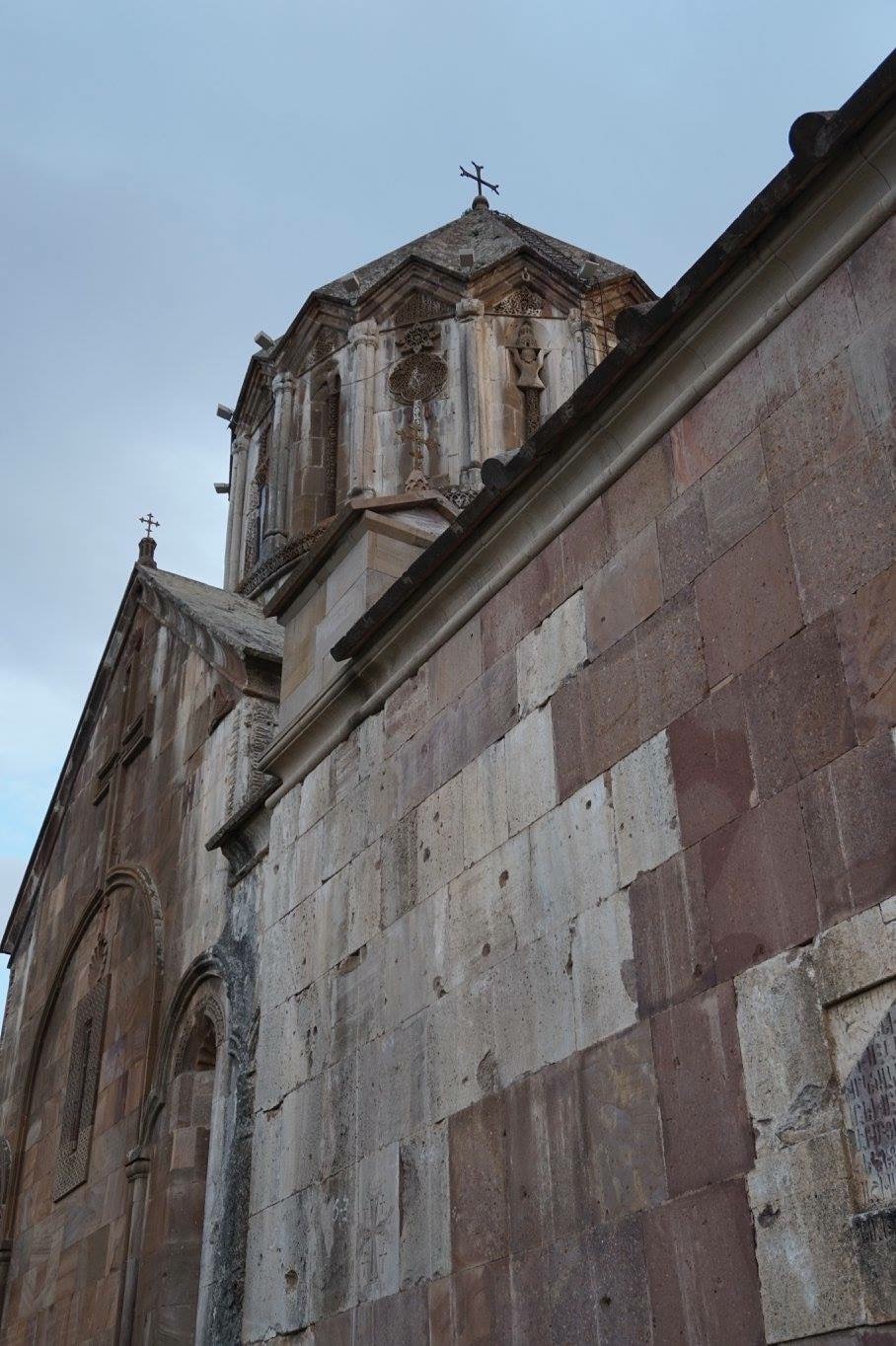
Gandzasar Monastery in Martakert (2015). Used with permission from Yelena Ambartsumian.
UNESCO’s Failure
UNESCO, known globally for championing world cultural heritage, has failed the Republic of Artsakh. On September 19, 2023, UNESCO launched a well-meaning (but utterly toothless) Armenia National Statement of Commitment Knowledge Hub and a similar Armenia National Consultation Report Knowledge Hub. The online portals come across as a futile attempt to maintain a presence in the real-life devastation currently unfolding. At this stage in the military regime’s progress, resources should be used to assist humanitarian and cultural preservation efforts on-the-ground—but Azerbaijan simply refuses to guarantee safe access to UNESCO monitors.
Both UNESCO’s current response and its lack of action in the months leading up to these (foreseeable) events are frustrating. Armenians have come to terms with UNESCO’s inability to protect their cultural heritage in this situation. The reasons UNESCO has been so ineffective are primarily two-fold: the first is the UNESCO’s Second Protocol lacks the enforcement mechanisms needed to (1) prevent cultural heritage destruction by states who are bad actors and (2) punish states that do. The disadvantages on relying on an organization such as UNESCO are compounded when the cultural heritage at issue resides in an area that UNESCO does not recognize as a “state.” The Republic of Artsakh falls under this category (meaning, UNESCO does not recognize it as a “state” of Armenia). UNESCO even failed to send a mere fact-finding mission to Artsakh, due to Azerbaijan’s objections.
The small crumb of good news is that the Armenian people took initiative and found a brilliant way to enforce global protection of their art and cultural heritage. As a law firm dedicated to protecting art and cultural heritage, we applaud the Republic of Armenia for developing this framework and precedent. We also are heartbroken that, as a nation, they were forced into developing this sort of legal path while a humanitarian crisis is currently ongoing.
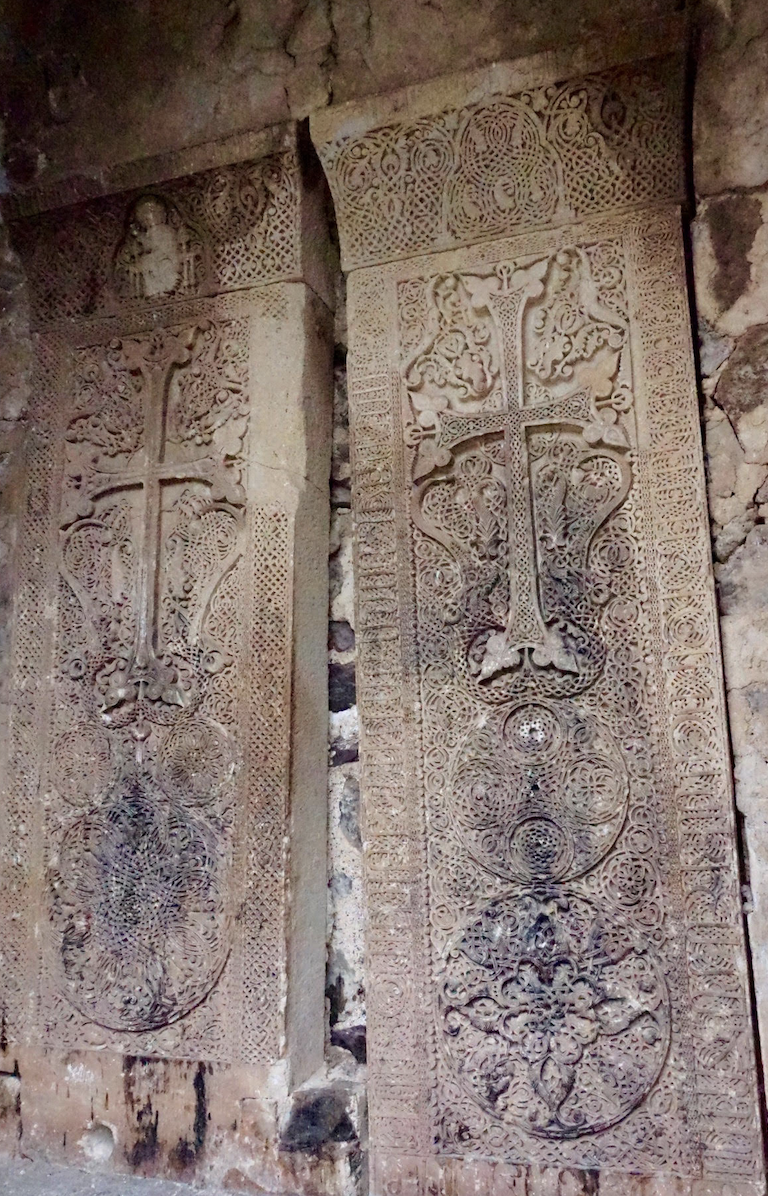
Dadivank’s khachkars (2015). Used with permission from Yelena Ambartsumian.
ICJ’s Decision and CERD
Instead of going through the UNESCO conventions, which inherently apply only to recognized states (and have therefore left out Armenian cultural heritage within the currently unrecognized Republic of Artsakh), Armenia instituted a case against Azerbaijan before the International Court of Justice (“ICJ”) under the CERD—the Convention on the Elimination of all Forms of Racial Discrimination—a United Nations treaty to which both Armenia and Azerbaijan are party.
The ICJ ruled for Armenia in its orders on provisional measures, stating that Azerbaijan must cease their state-sponsored destruction of Armenian art and cultural heritage in Artsakh.
With an ICJ order, which the U.N. Security Council is responsible for enforcing, the Republic of Armenia was able to create a new tool for safeguarding Armenian cultural heritage. Under Art. 94(2), member states are required to comply with ICJ orders. This means that Azerbaijan is clearly in violation. The U.N. Security Council has never before had to impose punishments (usually, simply the threat of involvement and diplomatic pressure from other nations are enough to stop the harm being done). However, in this case, action may not only be warranted, but is necessary to prevent Armenian culture from being erased from this region.
In an interesting update, the Republic of Armenia filed a request for indication of provisional measures against Azerbaijan, under the Armenia v. Azerbaijan proceedings before the ICJ on Sept. 29, 2023. In the filing, the Republic of Armenia specifically asked the Court to reaffirm Azerbaijan’s obligations under the Orders it rendered previously (stating, “in particular those of 7 December 2021 and 22 February 2023.“).
The importance of protecting the art and cultural heritage in Artsakh cannot be undermined. Why? Read on.
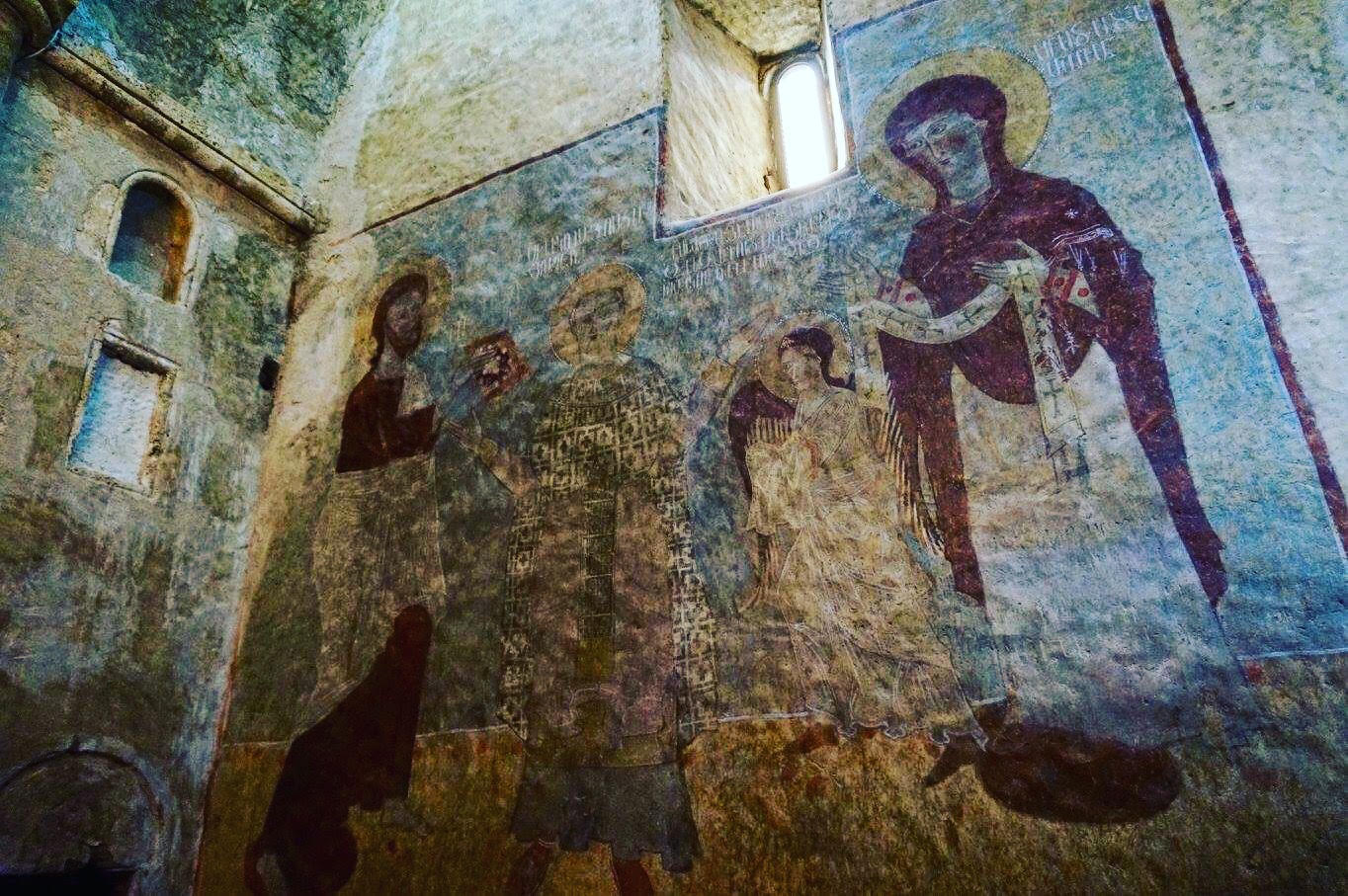
Fresco in Dadivank (2015). Used with permission from Yelena Ambartsumian.
Armenian Crown Jewels at Risk
Armenian cultural heritage has been under attack for some time. For evidence, turn to the fate of Armenian culture in the Caucasus under Azerbaijani occupation. Nearly all Armenian heritage sites in Nakhichevan were destroyed by Azerbaijan during “peacetime.” Satellite imagery by the Caucasus Heritage Watch from November 2022 confirmed that 98% of Armenian cultural sites were completely destroyed. Devastatingly, such annihilation was the result of state-sponsored, orchestrated destruction by Azerbaijani officers. To date, Azerbaijan denies destruction and instead claims that Armenian cultural heritage never existed in Nakhichevan.
Artsakh’s treasures are incredibly vulnerable in light of recent aggression by Azerbaijani forces. This is devastating to the Armenian and global artistic, religious, and historical academic communities, because Artsakh is referred to as the crown jewels of Armenian culture due to the massive number of sites from antiquity to the medieval ages, as well as cave complexes with some of the earliest evidence and remains of various hominid species in Eurasia (after crossing from Africa). In addition to having ties to Armenian nobility, the art, artifacts, and architecture in Artsakh are vital to understanding and appreciating Armenian culture. Armenians themselves reported emphasize the significance of Artsakh by saying, “after all, the crown of the ancient Kingdom of Armenia is in Nagorno-Karabakh [Artsakh].”
The entire region presents a stunning encapsulation of Armenia’s art and history. Early historical monuments and ancient fortresses reflect pre-Christian influences, while later expressions such as illuminated manuscripts, ecclesiastical murals, cross-stones, and religious structures embody the heritage of one of the world’s oldest, indigenous Christian populations. Below are two specific Armenian cultural crown jewels, currently under attack.
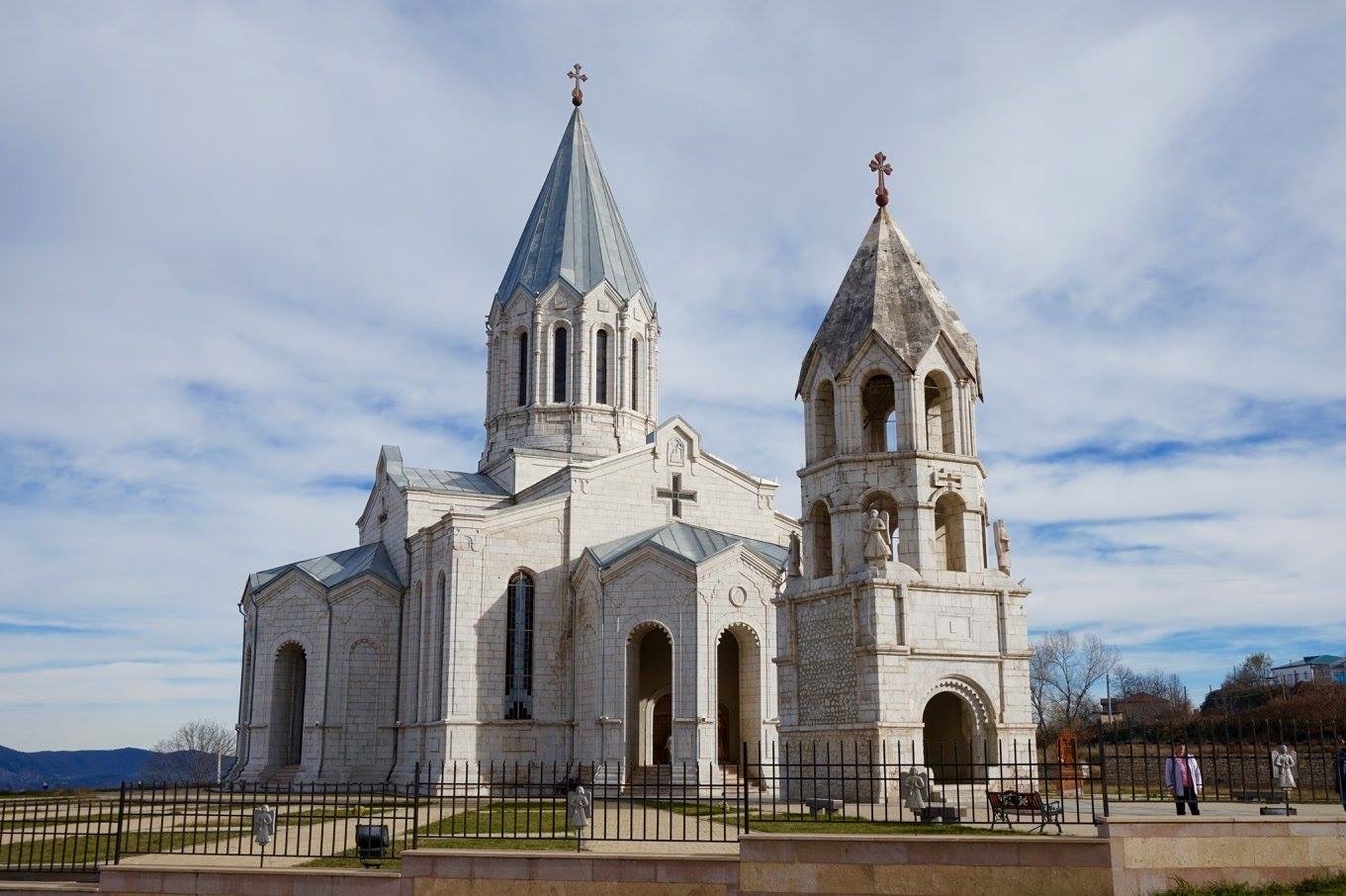
Ghazanchetsots Cathedral in Shushi (2015). Used with permission from Yelena Ambartsumian.
Shushi
The city of Shushi, in Nagorno-Karabakh, is a true Armenian cultural crown jewel. Shushi came under occupation by Azerbaijan in November 2020. Before and after gaining control of Shushi, Azerbaijan intentionally attacked its Armenian cultural heritage. In fact, in October 2020, it shelled the beautiful Ghazanchetsots Cathedral not once, but twice. There was no evidence that the shelling qualified as a military objective, particularly as civilians were hiding in the church (and the second shelling occurred when international journalists arrived to cover the destruction —one journalist was killed).
Ensuing coverage of the cathedral revealed graffiti on the walls, with Azerbaijani leaders marching through the sacred space. Precious manuscripts and relics, such as the Right Arm of Grigoris—the Catholicos of the region and grandson of St. Gregory the Illuminator who
converted Armenia to Christianity in the early 300s—are feared to be lost.
Azerbaijan then began its own “renovation” of the cathedral (deemed by the Azerbaijani Ambassador to the Holy See Ilgar Mukhtarov as a corrective effort to return the cathedral to “its original appearance [prior to Armenian cultural influence.]” This “renovation” was not done in consultation with the Armenian Apostolic Church and instead involved “beheading” the cathedral by removing its pointed dome—a hallmark of Armenian church architecture. Azerbaijan also destroyed another church in Shushi—the “Kanach Zham” (Green Chapel) Armenian Church of St. John the Baptist—by removing its pointed cupola.
The devastation is reminiscent of proto-Azerbaijani armed forces’ destruction of Shushi in 1920, which were supported by the Ottoman Army, as it marched eastward to try to take control of the region amidst the Armenian Genocide. At that time, the Ghazanchetsots was also targeted and vandalized, in addition to other significant Armenian cultural heritage sites. Half of Shushi was revealed to be destroyed, as the unrecognized Azerbaijan Democratic Republic carried out a “cultural de-Armenianization” of Nagorno-Karabakh. Current reports and photos of the region now under occupation prove that the cultural jewels of the city are – once again – suffering intentional destruction at the hands of Azerbaijani military forces.
Dadivank
Dadivank is another important cultural jewel that has fallen under Azerbaijani occupation. This is an unprecedented loss, as the Dadivank region is a spiritual center for Armenian Christians. Dadivank contains an important religious complex, known as the Dadivank Monastery, which houses the relics of St. Dadi, a disciple of Thaddeaus the Apostle, in addition to other sacred artifacts and objects. Because the land is now under Azerbaijani control, irreplaceable symbols of Armenian spiritual and religious heritage are in danger.
The monastery itself encompasses a series of more than thirty buildings on its territory. This includes several churches, chapels, monasteries, libraries, and living quarters, as well as the Hasan-Jalal Palace (and even a printing press!). Cultural highlights include works such as the frescos on the walls of the Church of the Holy Virgin (built in 1214 by Princess Arzu-Khatan, and the porch-chapel of St. Grigor (built in 1224 as the burial vault of princes).
Another priceless piece of Armenian cultural heritage is located on these grounds: khachkars, or cross-stones (stone slabs with engraved crosses). These are irreplaceable components of the Armenians’ cultural legacy, because they are exclusive to Armenian religious art (and have been for centuries). Many of the khachkars located in the St. Dadi Church, for example, date back to the 12th and 13th centuries. Unfortunately, because these works are so closely tied to Armenian Apostolic Church identity, khachkars and other works of ecclesiastical art and architecture are prime targets for Azerbaijani destruction.
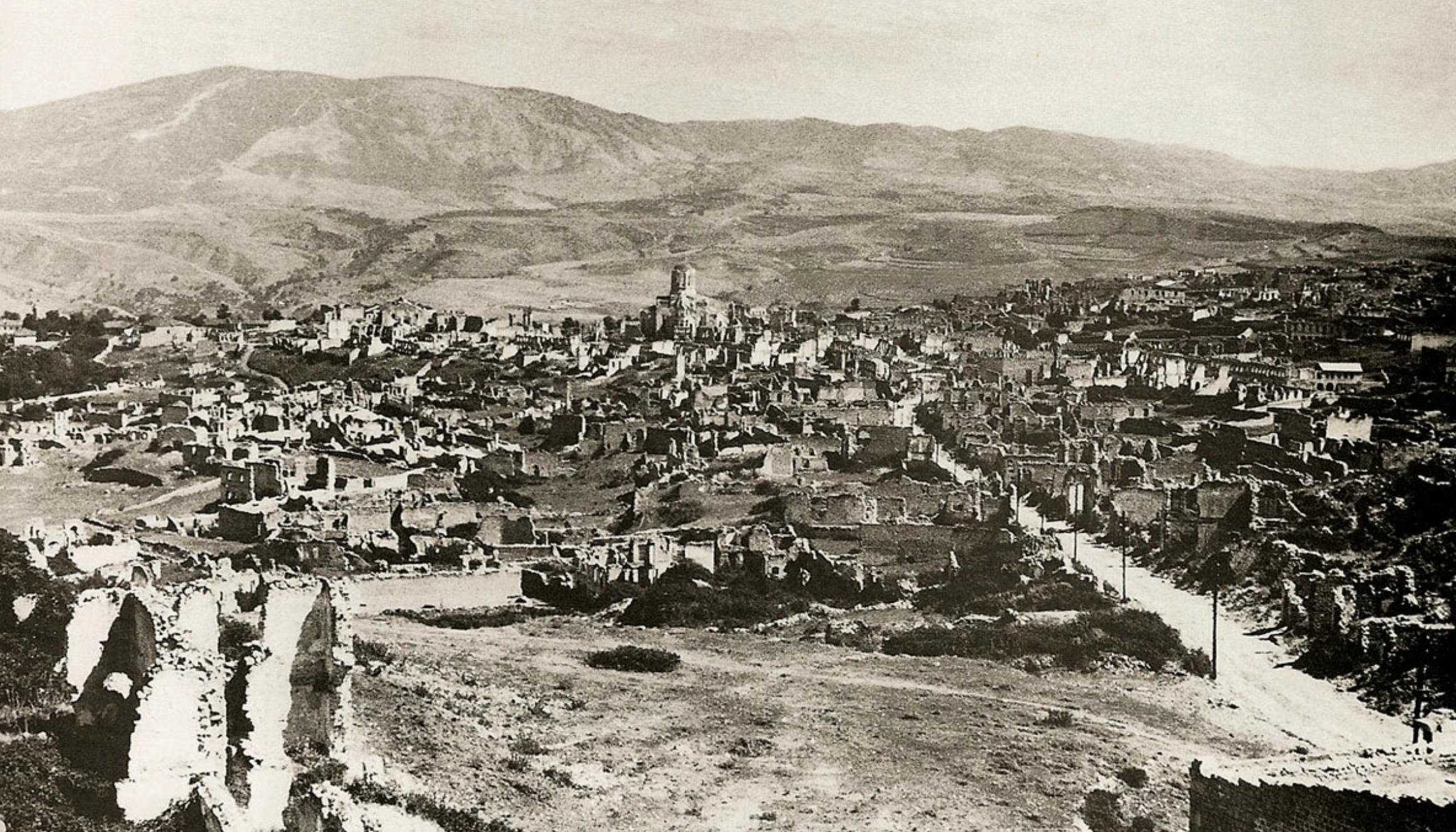
Ruins of Shushi after the city’s destruction by Azerbaijani army in March 1920. In the center: defaced Armenian Ghazanchetsots Cathedral. Image via State Archives of Armenia (public domain).
Global Response
Armenians who have been able to flee recount the bombing, fear and death they have left behind. Their first-person accounts give us a clearer insight as to what is truly going on in Artsakh – both to ethnic Armenians and to their cultural and artistic treasures. Reports of attacks done with “no apparent regard for the lives or basic human rights of the population of Nagorno-Karabakh” explain the seriousness of the situation.
Armenian art and architecture carry incredible significance – not just in Armenian culture, but as a vital piece of our shared global human narrative. The works being destroyed are testaments to their artistic mediums – gorgeously decorated and elaborately intricate. More importantly, they are symbols of the history of Armenia as a liberated people.
Many of these cultural heritage sites have served as pilgrimage destinations for Armenians for centuries. Even apart from the significance to Armenian culture, the sacred works and spaces are a testament to pre-Christian medieval influences, early Christian artistic works, and the 19th and 20th century religious-cultural renaissance of the region.
All can do their part in raising awareness of the on-going crisis in Armenia. In addition to continuing to pressure government officials to take action, make a donation through a trusted relief organization.
Donate to the Armenian Red Cross here.